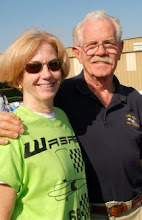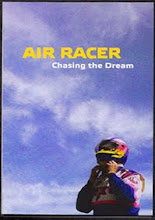Flybaby
On the ground the airplane steered using tailwheel steering quite well and better than expected. The differential mechanical heal brakes were effective for stopping but not steering. It was very tight for my 6’2” frame and I found the limited mobility, particularly in my knees to make brake actuation troublesome.
I found that the tail lifted at 25 mph and takeoff at 45. With that much power on the airplane I found the take-off minimum speed limited by the three point attitude. There seemed little need to add power above about half power which gave me about 55 mph and nice control in all axes.
I climbed at 55 to 5,500 feet where I stalled the airplane power off. With a stall of 41 mph, 120 ft^2 of wing and an estimated weight of 800 pounds gives a CL max of roughly 1.4. Refrencing Von Doenhoff; the 4412 and a CL max of 1.4, this correlates nicely to the standard roughness trace (6.0). With the power off at 50 mph the airplane descended at a rate of about 600 ft/min, which gives an L/D of 7 to 1 and a required power of 15 horsepower.
The airplane has positive dihedral effect and positive spiral stability, and is very stable in both pitch and yaw. Roll forces are dominated by stiction but match the pitch forces well. Trim speed for the airplane appeared to be 70 mph.
I did 5 landings on runway 26 and 30 with winds at 290 and 20 knots. With the winds that high a three point was quite difficult, but a wheelie with touchdown around 50 to 55 mph worked quite nicely. I would fly the airplane actively until touchdown with approximately 1/4 throttle and roll out the power to allow the tail to come down. I believe operations on 26 in that wind were relatively close to the cross wind limit for the airplane.























